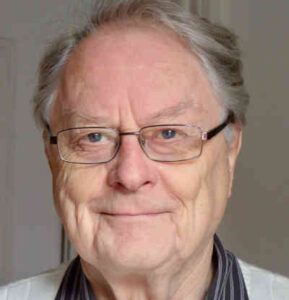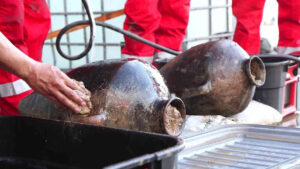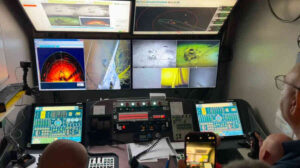Estou lendo o livro de MITHEN, S. After the Ice: A Global Human History, 20,000 – 5000 BC. London: Weidenfeld & Nicolson, 2011, 664 p. O livro foi publicado, em inglês, em 2003. Há uma tradução para o português, Depois do gelo, pela Imago, Rio de Janeiro, 2007.
Steven Mithen (nascido em 1960) é um arqueólogo britânico, conhecido por seu trabalho sobre a evolução da linguagem, música e inteligência, caçadores-coletores pré-históricos e as origens da agricultura. Ele é professor de Pré-história Inicial na Universidade de Reading, Reino Unido. Veja suas publicações.
Diz Steven Mithen no prefácio: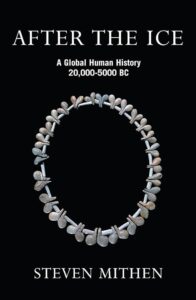
Este livro é uma história do mundo entre 20000 e 5000 a.C. Foi escrito para aqueles que gostam de pensar no passado e desejam saber mais sobre as origens da agricultura, das cidades e da civilização. E também para os que pensam no futuro. O período em discussão foi o de aquecimento global, durante o qual surgiram novos tipos de plantas e animais — espécies domésticas que sustentaram a revolução agrícola (…)
Este livro faz perguntas simples sobre a história humana: o que aconteceu, quando, onde e por quê? Oferece respostas entremeando uma narrativa histórica com argumentos causais. Ao fazê-lo, atende também aos leitores que perguntarão: “como sabemos disso?” — muitas vezes uma pergunta muito apropriada quando os indícios arqueológicos parecem tão escassos. E After the Ice [Depois do Gelo] faz outro tipo de pergunta sobre o passado: como era viver em tempos pré-históricos? Qual era a experiência do dia a dia daqueles que viveram o aquecimento global, uma revolução agrícola e a origem da civilização?
Tentei escrever um livro que torne acessível a um vasto público os indícios da pré-história, mantendo ao mesmo tempo os mais altos níveis de erudição acadêmica.
E no capítulo 1, O nascimento da história, o autor explica:
A história humana começou em 50000 a.C. ou por aí. Talvez 100000 a.C., mas certamente não antes. A evolução humana tem um pedigree bem mais longo — pelo menos 3 bilhões de anos se passaram desde a origem da vida, e 6 milhões desde que nossa linhagem se cindiu à do chimpanzé. A história, desenvolvimento cumulativo de fatos e conhecimento, é assunto recente e surpreendentemente curta. Pouca coisa de importância aconteceu até 20000 a.C. — as pessoas apenas continuaram vivendo como caçadores-coletores, exatamente como vinham fazendo seus ancestrais por milhões de anos. Viviam em pequenas comunidades e jamais permaneciam muito tempo em um assentamento. Pintaram-se algumas paredes de cavernas e fizeram-se algumas armas de caça mais ou menos excelentes; mas não houve fatos que influenciassem o curso da história futura, que criassem o mundo moderno.
Então vieram uns espantosos 15 mil anos que testemunharam a origem da agricultura, das cidades e da civilização. Em 5000 a.C., as fundações do mundo moderno já se haviam estabelecido, e nada do que veio depois — a Grécia clássica, a Revolução Industrial, a era atômica, a Internet — jamais se igualou ao significado desses fatos. Se 50000 a.C. assinalou o nascimento da história, 20000 – 5000 a.C. foi a sua maioridade.
O capítulo 7 trata da Fundação de Jericó: arquitetura neolítica, enterro e tecnologia do Vale do Jordão, 9600 – 8500 a.C.
Transcrevo abaixo uma tradução deste capítulo. O estudo de Jericó faz parte, ainda que em sobrevoo, de meu programa de História de Israel. Mas sempre tive curiosidade de saber mais sobre a Jericó pré-histórica. Meu professor de arqueologia no PIB, Robert North, fez escavações em Ghassul e sempre falava com entusiasmo de Kathleen Kenyon, que escavou Jericó.
 John Lubbock* está parado na sombra da noite das colinas palestinas, olhando um grupo de pequenas moradas redondas no vale embaixo. Possuem telhados planos de palha e se misturam com abrigos de palha, não diferentes dos que ele viu em Ohalo em 20000 a.C. Mas as casas agora são completamente novas. Salgueiros, choupos e figueiras cercam a aldeia, evidentemente alimentados por uma nascente local e crescendo exuberantes no novo mundo quente e úmido do Holoceno. Mais adiante, pântanos chegam até a beira do lago Lissan — conhecido hoje como Mar Morto.
John Lubbock* está parado na sombra da noite das colinas palestinas, olhando um grupo de pequenas moradas redondas no vale embaixo. Possuem telhados planos de palha e se misturam com abrigos de palha, não diferentes dos que ele viu em Ohalo em 20000 a.C. Mas as casas agora são completamente novas. Salgueiros, choupos e figueiras cercam a aldeia, evidentemente alimentados por uma nascente local e crescendo exuberantes no novo mundo quente e úmido do Holoceno. Mais adiante, pântanos chegam até a beira do lago Lissan — conhecido hoje como Mar Morto.
Muitas árvores foram derrubadas para fornecer material de construção e criar pequenos campos para cevada e trigo. Se essas safras são biologicamente domésticas ou selvagens, parece inteiramente sem importância, uma vez que com certeza chegou o novo mundo da agricultura. A data é 9600 a.C. e John Lubbock olha para Jericó, aldeia que assinala uma virada na história do oeste asiático.
Minha primeira visão de Tell es-Sultan, a antiga Jericó, foi igualmente impressionante, mas menos pitoresca. Também eu fiquei parado à sombra das colinas palestinas, cerca de meio quilômetro a oeste do que se tornara um grande monte constituído por vários milênios de construções desmoronadas e detritos humanos, erodidos pelo sol, pelo vento e pela chuva. Muito a leste, faixas de brilhantes amarelos e deslumbrantes brancos do vale do Jordão ainda ardiam ao sol; imediatamente abaixo de mim, os prédios de blocos cinza-opaco da cidade palestina que hoje cerca o antigo sítio. Mas ali, no centro de minha visão, estava Tell es-Sultan, famosa como a “mais antiga cidade do mundo”. Parecia uma pedreira antiga, ou mesmo uma zona de bombardeio.
Isso, claro, era culpa da minha profissão — os arqueólogos que começaram a cavar o monte em 1867. Poucos anos depois, o Capitão Charles Warren fora procurar as muralhas derrubadas pelas trombetas de Josué e seus israelitas, acreditando que Tell es-Sultan era a antiga Jericó bíblica. Uma equipe de estudiosos alemães o seguiu entre 1908 e 1911, e depois John Garstang, da Universidade de Liverpool, na década de 1930. Mas foram as grandes escavações de Kathleen Kenyon, entre 1952 e 1958, que revelaram ao mundo a antiga Jericó[1].
Kathleen escreveu que “o oásis está quase como imaginamos o Jardim do Éden”[2]. As verdes árvores e a terra agrícola arável que cercavam a Jericó para a qual eu olhava espalhavam-se por muitos quilômetros além do belo oásis que Kathleen vira. Irrigação moderna hoje leva água de ‘Ain es-Sultan — a nascente que deu origem à aldeia — a campos distantes no vale. Assim, usei a imaginação para abater aquelas árvores distantes e plantei muito mais palmeiras em torno do monte. Demoli as construções de concreto e blocos pré-moldados e plantei campos de milho no lugar. Depois armei um conjunto de tendas brancas que Kathleen usara no pé do monte. Uma vez erigidas, eu via um rio de trabalhadores deixando o monte ao fim do dia de trabalho, os arqueólogos e estudantes instalando-se para o chá, antes de começar a classificar as descobertas.
Esse foi o dia em que eles tiveram a primeira sugestão da mais antiga construção dentro do monte. A cidade da Idade do Bronze e a de edifícios retangulares do Neolítico Tardio já eram bem conhecidas. Mas nesse dia, que eu sabia ter sido em algum momento em 1956, “ficou claro”, Kathleen escreveria depois, “que estávamos penetrando numa diferente fase abaixo… os pisos eram de terra, não de gesso… as paredes eram curvas e as plantas das casas pareciam ser redondas”[3].
Sabemos que grupos de pessoas natufianas acamparam junto à nascente, porque ali se encontraram espalhados seus instrumentos em forma de meia-lua. Com toda probabilidade plantaram cereais, ervilhas, lentilhas, e conseguiram uma magra colheita antes de partirem para viver em outra parte no vale ou nas colinas.
Por volta de 9600 a.C., as secas de verão chegaram ao fim. Novas chuvas alimentaram os rios que se precipitaram pelas colinas palestinas; o Jordão começou a encher. Espessas camadas de solo rico e fértil foram depositadas no vale do Jordão por novas enchentes anuais, e estas foram irrigadas pela fonte que fluía com um vigor recém-descoberto. As safras cultivadas floresceram, muito provavelmente substituindo as plantas selvagens não cuidadas como principais fornecedoras de alimentos. Os natufianos tardios estenderam a duração de sua estada, até que a história se repetiu e a vida sedentária da aldeia renasceu longe das matas mediterrâneas preferidas pelos natufianos iniciais. E assim Jericó foi fundada, e com ela as pessoas se tornaram agricultores.
As pessoas continuaram a viver em Jericó até os dias atuais. A primeira aldeia foi sepultada sob casas, armazéns e santuários construídos por sucessivas gerações, as que usaram cerâmica, bronze, e depois entraram nos anais da história do Antigo Testamento. E assim um monte gigante foi criado pela nascente de ‘Ain es-Sultan, de 250 metros de comprimento e mais de 10 metros de altura. Consistia de paredes de adobe desmoronadas e camada sobre camada de pisos de casas e fossas de lixos; mas, além de detritos humanos, o monte continha os pertences perdidos e os túmulos ocultos de 10 mil anos de história humana.
Kathleen Kenyon (1906-1978) chegou a Jericó querendo aplicar o que para ela eram técnicas moderníssimas de escavação. Como Dorothy Garrod, que descobrira o natufiano, Kathleen foi uma das grandes arqueólogas britânicas do século XX. As duas venceram no que era em essência um mundo masculino. Kenyon estudou em Oxford durante a década de 1920 e, em seguida, dirigiu escavações na Inglaterra e na África. Atuou como diretora do Instituto de Arqueologia do University College, em Londres, durante a guerra, e acabou por tornar-se diretora do St. Hugh’s College, em Oxford. Recebeu muitas honrarias, que culminaram com a concessão do título de Dama do Império Britânico em 1973[4].
Seu objetivo em 1952 era explorar mais as fases finais da antiga cidade, aquelas relacionadas com a história bíblica, e descobrir os vestígios mais antigos, que julgava mais importantes e merecedores de “completa exploração”. Tinha toda razão. Isso se tornou evidente para o mundo em 1957, quando ela publicou uma história popular de seu trabalho, Digging Up Jericho [Desenterrando Jericó]. Os acadêmicos, porém, tiveram de esperar até o início da década de 1980 para que saíssem os volumes adequadamente enormes descrevendo a arquitetura, a cerâmica e a sequência-chave de camadas dentro do monte[5]. Infelizmente, Kathleen havia morrido alguns anos antes de sua publicação.
John Lubbock está agora dentro da aldeia, ajudando a construir uma casa de adobe. Há muita obra de construção em andamento, pois os abrigos de sapé são aos poucos substituídos por construções mais perenes. Com as chuvas de inverno confiáveis, safras produtivas e abundante caça selvagem dentro do vale, o povo de Jericó não precisa partir. Sempre que eles preferem passar várias semanas ou meses fora, visitando amigos e parentes ou em longas expedições de caça ou comércio, sabem que voltarão a Jericó. E assim estão dispostos a investir tempo e energia na construção de casas de adobe e na limpeza de campos. Uma vez construídas umas poucas casas, Jericó atraiu novos moradores dispostos a deixar seus grupos de caçadores-coletores e juntar-se ao novo estilo de vida de cultivar plantações.
Lubbock passou a manhã cavando argila do fundo do vale e transportando-a em um trenó de madeira para a aldeia; lá, ela é misturada com palha e cortada em tijolos oblongos que são deixados para secar ao sol. Eles serão unidos com uma argamassa de lama para fazer as paredes de moradias redondas, cada uma com cerca de 5 metros de diâmetro e com pisos rebaixados. As paredes superiores serão construídas com gravetos e galhos, o teto com juncos untados com argila.
oblongos que são deixados para secar ao sol. Eles serão unidos com uma argamassa de lama para fazer as paredes de moradias redondas, cada uma com cerca de 5 metros de diâmetro e com pisos rebaixados. As paredes superiores serão construídas com gravetos e galhos, o teto com juncos untados com argila.
Nessa noite, depois de se banhar na fonte, Lubbock anda pela aldeia e conta nada menos que cinquenta moradas — algumas dispostas em torno de pátios para uso de grandes famílias, outras sós ou em grupos isolados. Há fogueiras dentro e fora, e um denso véu de fumaça paira entre os becos. As pessoas sentam-se em pátios, algumas trançando esteiras e cestos, outras trocando noticias e fazendo planos para o dia seguinte. Em 9600 a.C., é provável que haja mais de quinhentas pessoas vivendo em Jericó — talvez a primeira vez na história da humanidade que uma população completamente viável estava vivendo no mesmo lugar ao mesmo tempo.
Dentro de 500 anos, Jericó já se tornara ainda maior, com mais de setenta moradias, talvez com uma população de mil habitantes. Uma parte bem maior da mata em redor foi aberta e grandes áreas se achavam em cultivo. Muitas das moradias originais já haviam desabado ou sido deliberadamente derrubadas para construírem-se outras sobre suas ruínas. Mas a diferença mais impressionante em relação à aldeia era que seu lado oeste, de frente para as colinas palestinas, era cercado por um enorme muro de pedra e uma grande torre circular havia sido construída em seu interior.
Kathleen Kenyon descobriu essas construções durante suas escavações em 1956. Parece improvável que a muralha, de 3,6 metros de altura e 1,8 de largura na base, tenha cercado todo o assentamento, pois nenhum vestígio dela se encontrou no lado leste. Dentro desse muro ela descobriu os restos da torre, de 8 metros de altura e 9 de diâmetro na base, com um peso estimado de mil toneladas. Uma escada interna, com 22 degraus de pedra, conduzia ao topo. Tal arquitetura era inteiramente sem precedentes na história humana, e é a mais notável das descobertas de Kathleen — seriam necessários pelo menos 100 homens, trabalhando durante 100 dias, para construir a muralha e a torre. Como ela própria sugeriu, “em concepção e construção, essa torre não faria vergonha diante de um dos mais grandiosos castelos medievais”[6]. A muralha e a torre permanecem inteiramente únicos para esse período.
Kathleen supôs que foram construídos para defender a cidade de ataque, uma conclusão aparentemente incontestável, em vista das ligações bíblicas de Jericó. Só em 1986 Ofer Bar-Yosef fez algumas perguntas óbvias: quem eram os inimigos de Jericó? Por que a muralha não foi reconstruída depois de ser sepultada por detritos de casas após não mais que 200 anos? Por que não há outros locais fortificados da mesma data no oeste asiático?
Bar-Yosef concluiu que as muralhas eram para defesa, mas não contra um exército invasor— o inimigo era a água e a lama das enchentes[7]. Jericó vivia em perpétuo perigo quando a chuva aumentava e o desflorestamento desestabilizava sedimentos nas colinas palestinas, que podiam então ser carregados para a borda da aldeia pelos wadis próximos. Quando o lixo da aldeia sepultou as muralhas, o nível de assentamento já tinha literalmente se elevado pelo acúmulo de casas desmoronadas e lixo humano. Isso afastou as ameaças da água e lama das enchentes. Simplesmente não se precisava mais de uma muralha.
Ofer Bar-Yosef descartou a ideia de que a torre se destinava a fortificação. Ficou impressionado com sua ótima conservação, e sugeriu que isso pode ter sido ajudado pela presença de uma plataforma de adobe em cima da construção de pedra. A própria Kathleen encontrou, ligadas ao lado norte da muralha, vestígios de construções que julgou que poderiam ter sido usadas para armazenar grãos. Em vista disso, Bar-Yosef sugeriu que a torre era de propriedade pública ou estava a serviço da comunidade, talvez como um centro de cerimônias anuais. Não parece provável que algum dia se encontre uma resposta definitiva — embora mais escavações nas vizinhanças da torre certamente ajudassem. O que é claro é que, com a construção da muralha e da torre, as pessoas criavam arquitetura e atividade comunal em escala inteiramente nova. Começara uma nova fase da história humana.
Em fins da década de 1950, assentamentos de aldeias semelhantes na Europa — embora muito mais novos em idade —já haviam sido descritos como neolíticos. Na década de 1920, Gordon Childe, o principal arqueólogo do período pré-guerra, cunhara a expressão “Revolução Neolítica” para se referir ao surgimento repentino de assentamentos que ele acreditava refletir uma mudança radical no modo de vida. Isso não apenas envolvia agricultura, mas arquitetura, cerâmica e machados de pedra polida. Childe pensava que estes formavam um “pacote neolítico”, que sempre era adquirido como um todo único e indivisível.[8].
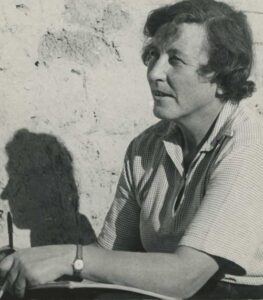 Kathleen Kenyon descobriu que ele estava errado. Embora as casas, túmulos e estilo de vida deles em geral se encaixassem bem no molde neolítico, os primeiros aldeões em Jericó não dispunham de um dos elementos cruciais do pacote neolítico: a cerâmica. As poucas tigelas, vasos, pratos ou copos que sobreviveram eram feitos de pedra; é provável que muitos mais tenham sido feitos de madeira ou fibras vegetais. E assim Kathleen cunhou um novo termo para a cultura inicial de Jericó: o Neolítico Pré-Cerâmico (PPN na sigla em inglês). Na verdade, designou a primeira aldeia em Jericó como pertencente ao “Neolítico Pré-Cerâmico A” — um período que agora se sabe ter durado não mais do que mil anos após o início do Holoceno.
Kathleen Kenyon descobriu que ele estava errado. Embora as casas, túmulos e estilo de vida deles em geral se encaixassem bem no molde neolítico, os primeiros aldeões em Jericó não dispunham de um dos elementos cruciais do pacote neolítico: a cerâmica. As poucas tigelas, vasos, pratos ou copos que sobreviveram eram feitos de pedra; é provável que muitos mais tenham sido feitos de madeira ou fibras vegetais. E assim Kathleen cunhou um novo termo para a cultura inicial de Jericó: o Neolítico Pré-Cerâmico (PPN na sigla em inglês). Na verdade, designou a primeira aldeia em Jericó como pertencente ao “Neolítico Pré-Cerâmico A” — um período que agora se sabe ter durado não mais do que mil anos após o início do Holoceno.
Aqueles que viveram na aldeia “PPNA” de Jerico, viveram literalmente com seus mortos. Kathleen descobriu nada menos que 276 sepulturas, embora escavasse apenas 10% do assentamento. Estavam todos associados às construções, de uma forma ou de outra; ficavam embaixo do piso, sob a estrutura das casas, entre paredes e dentro da torre. Continuava a tradição-chave de enterro do Natufiano Tardio: as pessoas tendiam mais a ser enterradas sós que em grupos; muito poucos artefatos, quando tinha algum, eram enterrados com os mortos.
Após os enterros, e muito provavelmente quando toda a carne já se havia decomposto, cavavam-se frequentemente covas para tirar os crânios, muitos dos quais eram depois reenterrados em outro lugar dentro da aldeia. Uma coleção de cinco crânios de bebês foi colocada dentro de uma cova abaixo do que Kathleen julgava fosse um altar. Mas a maioria das crianças e bebês, que representavam 40% dos enterros, foi deixada intacta — eram principalmente os crânios dos adultos os removidos para exposição e eventual reenterro.
Por que havia tal interesse pelos crânios? Era um interesse que se tornaria muitíssimo elaborado à medida que a aldeia de Jericó se tornava uma cidadezinha, levando à cobertura dos crânios com máscaras de gesso e olhos de conchas de caurim. Kathleen pensou que houvera um culto aos ancestrais e estabeleceu uma comparação com o povo do rio Sepik na Nova Guiné, que em tempos recentes usava os crânios de venerados ancestrais em seus rituais. Mas jamais vamos saber exatamente por que as pessoas de Jericó — e na verdade de todo o oeste asiático e além — exumavam e reenterravam crânios humanos, talvez após um período de exposição[9].
Como acontecia com essas práticas funerárias, os instrumentos usados pelos aldeões de Jericó eram muito semelhantes aos do Natufiano Tardio, embora tenham algumas grandes inovações tecnológicas. A mais impressionante foi o uso de adobe para construção — trabalho intensivo que demonstrava o compromisso com a vida da aldeia. Contudo, muitos dos artefatos de pedra continuaram em grande parte sem mudança. Ainda se faziam micrólitos, assim como uma gama de lâminas, raspadores e foices. Machados e enxós de pedra, o que não surpreende, foram encontrados em número muito maior que antes. Eram usados para derrubar a vegetação para os campos. Esse desmatamento pode ter contribuído para a erosão do solo, aumentando a necessidade de uma muralha defensiva. Um artigo, porém, merece especial atenção: um novo tipo de ponta de flecha, conhecida pelos arqueólogos como ponta “el-Khiam”. Era de forma triangular, com duas ranhuras laterais usadas para prender ao cabo, e batizada com o nome do sítio onde foram descobertos os primeiros espécimes[10].
Assim como os micrólitos geométricos e lunares tinham vindo e passado de moda, o mesmo aconteceu com as pontas el-Khiam. Elas atingiram o auge da popularidade por volta de 9000 a.C, quando aparecem quase simultaneamente em todas as regiões ocidentais e centrais do Crescente Fértil. Como tal, não esta claro onde se originou o novo desenho, ou por que se tornou tão largamente adotado por toda essa vasta região. Muitas têm desenho aerodinâmico, e bem podem ter levado a uma substancial melhora na eficiência da caça. Mas nova pesquisa, empregando estudo microscópico, mostrou que um grande número dessas pontas foi usado mais como sovelas e puas que como pontas de projéteis, como se supunha tradicionalmente [11].
As gazelas continuaram a ser o principal alvo dos caçadores. Mas com a expansão da floresta, uma gama maior de animais tornou-se disponível como presa – e, portanto, os ossos de gamos e javalis se juntaram aos de gazelas e íbex dentro dos montes de lixo de Jericó. Raposas e pássaros, especialmente aves de rapina, também se tornaram proeminentes. É improvável que tenham sido caçados como comida: pele de raposa, garras, elegantes penas de asas e caudas podem ter sido artigos cruciais de adorno do corpo. Podem ter feito parte das redes de comércio que se desenvolvia rapidamente no vale do Jordão e além. Pois Jericó não estava sozinha nesse novo mundo neolítico.
Notas
1. O relato popular de Kenyon (1957) sobre seu trabalho, Digging Up Jericho, continua sendo um clássico e contém um resumo do trabalho anterior sobre o tell. As datas de radiocarbono para o assentamento PPNA [Pre-Pottery Neolithic A – Neolítico pré-cerâmico A] em Jericó são resumidas em Bar-Yosef & Gopher (1997). Eles listam quinze datas da trincheira ocidental que variam de 10300 ± 500 (10856–9351 cal a.C.) a 9230 ± 220 (8796–8205 cal a.C.), e três da seção norte entre 9582 ± 89 AP (9160 ± 8800 cal a.C.) e 9200 ± 70 AP (8521–8292 cal a.C.) [Obs.: cal = calibrated. As medições de datação por radiocarbono produzem idades em “anos de radiocarbono”, que devem ser convertidas em idades de calendário por um processo chamado calibração. AP = “Antes do presente” é uma marcação de tempo utilizada na arqueologia, paleontologia e geologia, que tem como base de referência o ano de 1950 d.C.].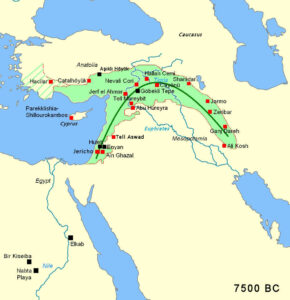
2. Kenyon (1957, p. 25).
3. Kenyon (1957, p. 70).
4. Para uma breve biografia de Kenyon, veja Champion (1998).
5. Para a arquitetura e estratigrafia de Jericó, veja Kenyon & Holland (1981); para a cerâmica e outros achados, veja Kenyon & Holland (1982, 1983).
6. Kenyon (1957, p. 68).
7. Bar-Yosef (1996) argumentou que os muros de Jericó eram para defesa contra inundações e deslizamentos de terra.
8. Para as opiniões de Childe sobre o Neolítico, veja, por exemplo, Childe (1925, 1928).
9. Embora Kenyon tenha se referido aos cultos de crânios do vale do rio Sepik na Nova Guiné, ela não desenvolveu seu argumento de que estes poderiam fornecer analogias úteis para aqueles da PPNA. Na região do rio Sepik, os ancestrais do clã eram normalmente representados por máscaras, muitas vezes de pessoas que supostamente desempenharam um papel fundamental na formação e história do clã. Assim como Kenyon sugere, os crânios engessados da PPNA podem ter sido de pessoas que desempenharam um papel fundamental na fundação da aldeia. No vale Sepik, crânios decorados e cabeças encolhidas eram frequentemente feitos de cabeças decepadas de inimigos; Baxter Riley (1923) fornece descrições particularmente evocativas de como as cabeças e crânios eram preparados. As práticas de caça de cabeças e o uso de cabeças como troféus, como praticado na Oceania, também podem fornecer analogias úteis para as práticas da PPNA e foram descritas por Hutton (1922, 1928) e Von Furer-Haimendorf (1938).
10. Pontas El-Khiam são pontas simétricas feitas em pequenas lâminas com dois entalhes basais. Elas foram originalmente definidas a partir das escavações no terraço de El-Khiam por Echegaray (1963). Por vinte anos, essa ponta foi o único tipo definido para o PPNA, mas à medida que coleções mais extensas se tornaram disponíveis, outros artefatos de tipo foram propostos, notavelmente a ponta do vale do Jordão e a ponta de Salibiya (Nadel et al., 1991). Todos os três são triangulares em forma com uma base estreita. Outros tipos de artefatos de sílex também foram reconhecidos como exclusivos do PPNA, notavelmente o truncamento de Hagdud, conforme descrito por Bar-Yosef et al. (1987). Para aqueles que gostam das complexidades da tipologia de pedra lascada neolítica do Crescente Fértil, Gebel e Kozlowski (1994) é uma leitura essencial. As frequências relativas de pontas El-Khiam, truncamentos Hagdud, micrólitos e pequenos pedaços bifaciais foram usadas para definir duas fácies do PPNA, o Khiamiano e o Sultaniano, com o último tendo baixas frequências de micrólitos e a presença de truncamentos Hagdud e picaretas bifaciais. Há um debate em andamento sobre se o Khiamiano e o Sultaniano representam kits de ferramentas funcionalmente diversos da mesma cultura, encontrados em locais diferentes (Nadel, 1990) ou dentro do mesmo assentamento (Mithen et al., 2000) ou fases cronologicamente sucessivas do PPNA (Bar-Yosef 1998b). Alguns argumentam que o Khiamiano é meramente uma mistura pós-deposicional do Sultaniano e do Natufiano subjacente (Garfinkel, 1996).
11. Isso é evidente pelos traços de microdesgaste presentes nas pontas, muitos dos quais indicam um movimento circular característico de perfuração ou perfuração em vez das fraturas de impacto que surgem nas pontas de projéteis. Esses estudos de microdesgaste estão sendo conduzidos por Sam Smith como pesquisa de doutorado na Universidade de Reading. Um relatório preliminar sobre as pontas de Dhra’ é fornecido em Goodale & Smith (2001).
Bibliografia citada neste capítulo
Bar-Yosef, O. 1998b. Jordan prehistory: A view from the west. In The Prehistoric Archaeology of Jordan (ed. D.O. Henry), pp. 162–74. Oxford: British Archaeological Reports, International Series, 705.
Bar-Yosef, O. & Gopher, A. 1997. Discussion. In An Early Neolithic Village in the Jordan Valley. Part I: The Archaeology of Netiv Hagdud (eds. O. Bar-Yosef & A. Gopher), pp. 247–66. Cambridge, MA: Peabody Museum of Archaeology and Ethnology, Harvard University.
Bar-Yosef, O., Gopher, A. & Nadel, D. 1987. The ‘Hagdud Truncation’ – a new tool type from the Sultanian industry at Netiv Hagdud, Jordan Valley. Mitekufat Haeven 20, 151–7.
Baxter Riley, E. 1923. Dorro head hunters. Man 23, 33–5.
Champion, S. 1998. Women in British Archaeology, visible and invisible. In Excavating Women. A History of Women in European Archaeology (eds. M. Diaz-Andreu & M.L.S. Sørenson), pp. 175–97. London: Routledge.
Childe, V.G. 1925. The Dawn of European Civilisation. London: Kegan Paul.
Childe, V.G. 1928. The Most Ancient Near East. The Oriental Prelude to European Prehistory. London: Kegan Paul.
Echegaray, G.J. 1963. Nouvelles fouilles à El-Khiam. Revue Biblique 70, 94–119.
Garfinkel, Y. 1996. Critical observations on the so-called Khiamian flint industry In Neolithic Chipped Stone Industries of the Fertile Crescent and their Contemporaries in Adjacent Regions (eds. H.G. Gebel & S. Kozlowski), pp. 15–21. Berlin: Ex Oriente.
Gebel, H.G. & Kozlowski, S. 1994. Neolithic Chipped Stone Industries of the Fertile Crescent and their Contemporaries in Adjacent Regions. Berlin: Ex Oriente.
Goodale, N. & Smith, S. 2001. Pre-Pottery Neolithic A projectile points at Dhra’, Jordan: Preliminary thoughts on form, function and site interpretation. Neo-lithics 2:01, 1–5.
Hutton, J.H. 1922. Divided and decorated heads as trophies. Man 22, 113–14.
Hutton, J.H. 1928. The significance of head-hunting in Assam. Journal of the Royal Anthropological Institute of Great Britain and Ireland 58, 399–408.
Kenyon, K. 1957. Digging Up Jericho. London: Ernest Benn Ltd.
Kenyon, K. & Holland, T. 1981. Excavations at Jericho, Vol. III: The Architecture and Stratigraphy of the Tell. London: British School of Archaeology in Jerusalem.
Kenyon, K. & Holland, T. 1982. Excavations at Jericho, Vol. IV. The Pottery Type Series and Other Finds. London: British School of Archaeology in Jerusalem.
Kenyon, K. & Holland, T. 1983. Excavations at Jericho, Vol. V: The Pottery Phases of the Tell and Other Finds. London: British School of Archaeology in Jerusalem.
Lubbock, John. 1865. Pre-historic Times, as Illustrated by Ancient Remains, and the Manners and Customs of Modern Savages. London: Williams & Norgate.
 Mithen, S.J., Finlayson, B., Pirie, A., Carruthers, D. & Kennedy, A. 2000. New evidence for economic and technological diversity-in the Pre-Pottery Neolithic A: Wadi Faynan 16. Current Anthropology 41, 655–63.
Mithen, S.J., Finlayson, B., Pirie, A., Carruthers, D. & Kennedy, A. 2000. New evidence for economic and technological diversity-in the Pre-Pottery Neolithic A: Wadi Faynan 16. Current Anthropology 41, 655–63.
Mithen, S.J., Finlayson, B., Mathews, M. & Woodman, P.E. 2000. The Islay Survey. In Hunter-Gatherer Landscape Archaeology, The Southern Hebrides Mesolithic Project, 1988–98, Vol. 2 (ed. S. Mithen), pp. 153–86. Cambridge: McDonald Institute for Archaeological Research.
Nadel, D. 1990. The Khiamian as a case of Sultanian intersite variability. Journal of the Israel Prehistoric Society 23, 86–99.
Nadel, D., Bar-Yosef, O., Gopher, A. 1991. Early Neolithic arrowhead types in the southern Levant: A typological suggestion. Paléorient 17, 109–19.
Von Furer-Haimendorf, C. 1938. The head-hunting ceremonies of the Konyak Nagas of Assam. Man 38, 25.
*Este livro conduz alguém dos tempos modernos aos pré-históricos: alguém para ver os instrumentos de pedra sendo feitos, os fogos ardendo nos lares e as moradas ocupadas; alguém para visitar as paisagens do mundo da era do gelo e vê-las mudar. Escolhi um rapaz chamado John Lubbock para essa tarefa. Ele visitará cada um dos continentes, começando no oeste da Ásia e seguindo pelo mundo afora: Europa, as Américas, Austrália, leste da Ásia, sul da Ásia e África. Viajará da mesma forma como os arqueólogos escavam — vendo os mais íntimos detalhes das vidas das pessoas, mas incapaz de fazer qualquer pergunta e com sua presença inteiramente desconhecida. Farei comentários para explicar como os sítios arqueológicos foram descobertos, escavados e estudados; as formas como contribuem para nossa compreensão de como surgiram a agricultura, as cidades e a civilização. Quem é John Lubbock? Ele vive em minha imaginação como um rapaz interessado no passado e com medo do futuro — não o seu próprio, mas o do planeta Terra. Tem o mesmo nome de um polímata vitoriano que, em 1865, publicou seu próprio livro sobre o passado e intitulou-o Prehistoric Times [Tempos pré-históricos]. O John Lubbock vitoriano (1834-1913) era vizinho, amigo e seguidor de Charles Darwin. Foi um banqueiro que instigou reformas financeiras-chave, um membro liberal do Parlamento que apresentou a primeira legislação para proteção de monumentos antigos e férias em bancos (públicos), um botânico e entomologista com muitas publicações científicas em seu nome. [Mas] vou mandar um John Lubbock dos dias de hoje para os tempos pré-históricos, levando um exemplar do livro de seu xará. Lendo-o em remotos cantos do mundo, ele apreciará tanto os feitos do John Lubbock vitoriano quanto o notável progresso que os arqueólogos fizeram desde a publicação de Prehistoric Times menos de 150 anos atrás. Uso John Lubbock para assegurar que esta história é mais sobre vidas de pessoas que apenas os objetos que os arqueólogos encontram.


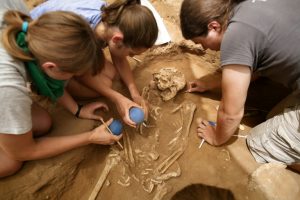
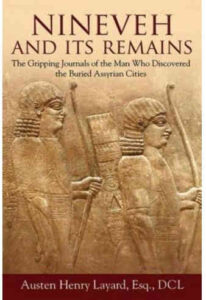
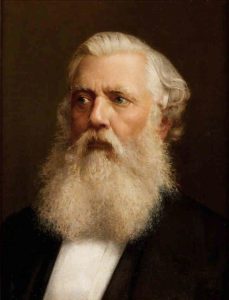
![LARSEN, M. T. The Conquest of Assyria: Excavations in an Antique Land, 1840-1860. New York: Routledge, [1996] 2016, 424 p. LARSEN, M. T. The Conquest of Assyria: Excavations in an Antique Land, 1840-1860. New York: Routledge, [1996] 2016, 424 p.](https://airtonjo.com/blog1/wp-content/uploads/2024/08/mtlarsen-1-212x300.jpg)
